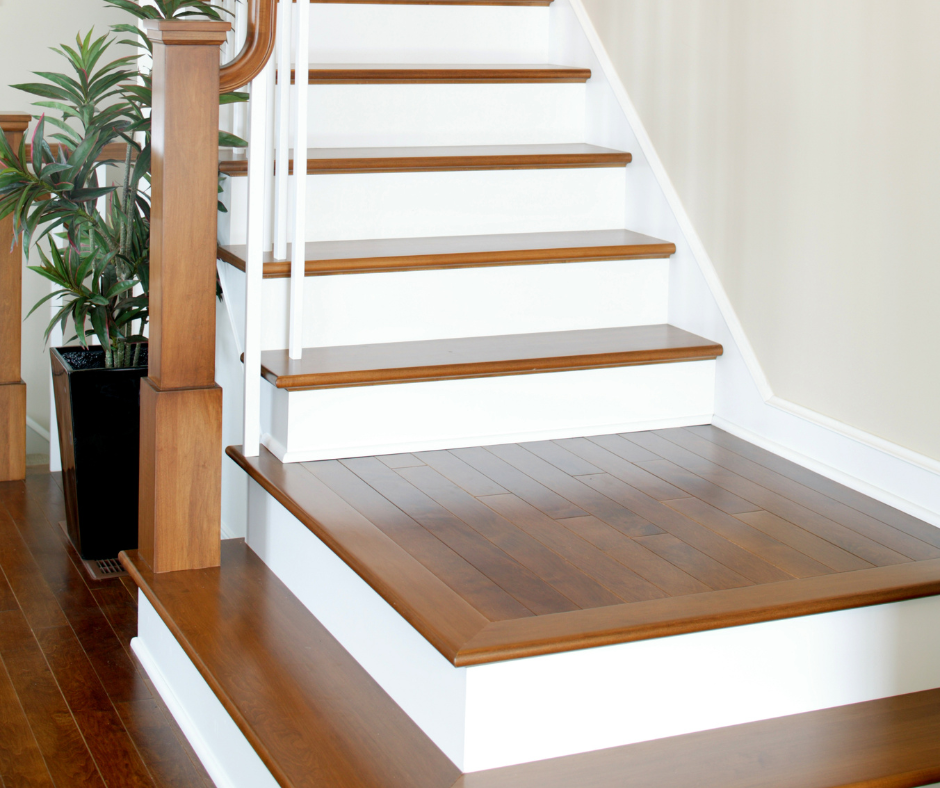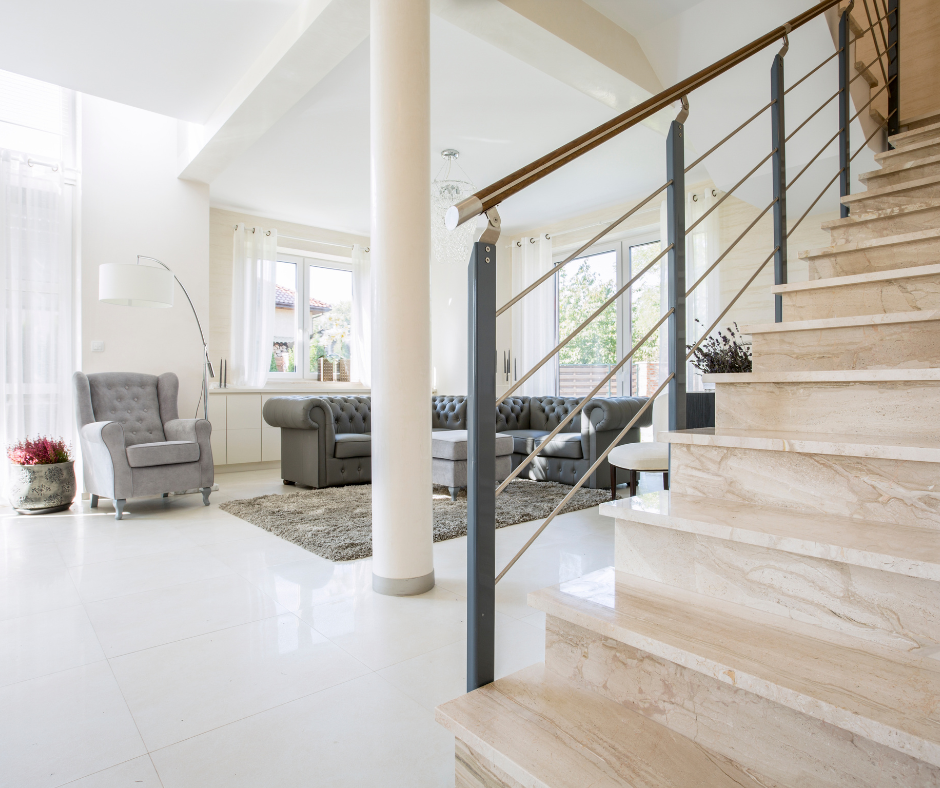Adding a deck stair tread overhang is essential for creating safe, stylish, and durable outdoor steps.
This overhang, often called the nosing, is the part of each tread that extends past the riser, helping with both stability and comfort.
It also highlights each step’s edge for easy visibility, creating a clean, professional look.
Just as carpeted stair landings provide a polished finish indoors, a well-crafted overhang elevates the appeal of your deck stairs.
From choosing materials to getting the right overhang depth, here are some things you need to know for a safe, stylish result.
Why Deck Stair Tread Overhang is Important
A deck stair tread overhang is crucial for safety, durability, and appearance.
Building codes recommend an overhang between ¾ inch to 1¼ inches for treads less than 11 inches deep.
This overhang improves stability by adding secure foot placement, especially helpful when descending stairs.
The overhang also serves as a visual marker, making each step edge more defined and reducing tripping risks.
For deck stair treads that are 11 inches deep or more, an overhang is not required but can still be a good design choice for consistency.
How Much Overhang on Stair Treads is Needed?
According to the International Residential Code (IRC), deck stair treads need an overhang of ¾ inch to 1¼ inches if they are less than 11 inches deep.
This range offers secure foot space without excessive protrusion, balancing comfort with safety.
While treads deeper than 11 inches don’t technically need an overhang, many builders prefer adding one for a cohesive, polished finish across the stairs.
Choosing the Best Materials for Deck Stair Treads
Durable materials are key when planning for a deck stair tread overhang.
Pressure-treated wood, composite decking, and cedar are popular choices because of their resistance to weather and heavy use.
Corrosion-resistant screws or brackets help secure each tread to the stringer and extend the stairway’s life.
To avoid issues with natural expansion, slightly spacing the boards also helps keep stairs looking great and functioning well.
The Role of Stair Tread Side Overhang
While side overhang isn’t required, it can complete the look by hiding unfinished edges and offering a uniform appearance.
This optional side overhang usually matches the front overhang for balance and symmetry, adding a professional finish to the stair design.
In addition to style, side overhangs can protect open stair sides from moisture and weather, adding to their durability.
Tips for Installing Deck Stair Tread Overhang
- Confirm Code Requirements: Always check local building codes before starting your project, as guidelines can vary based on location.
- Measure and Cut Precisely: Cut each tread to fit with a consistent overhang, creating an even, secure stairway.
- Allow for Expansion: Spacing boards slightly reduces the chance of warping and lets the material expand naturally.
- Secure with Rust-Resistant Fasteners: Using rust-resistant screws or brackets is essential, especially for outdoor stairs that are exposed to weather.
Steps to Success
Creating a durable and stylish deck stair tread overhang doesn’t have to be difficult.
By following code recommendations, choosing quality materials, and securing each tread, you’ll create stairs that look polished and feel secure.
The right overhang doesn’t just complete your deck; it adds a touch of luxury to your outdoor space, balancing function and style as beautifully as a carpet stair landing does indoors.




